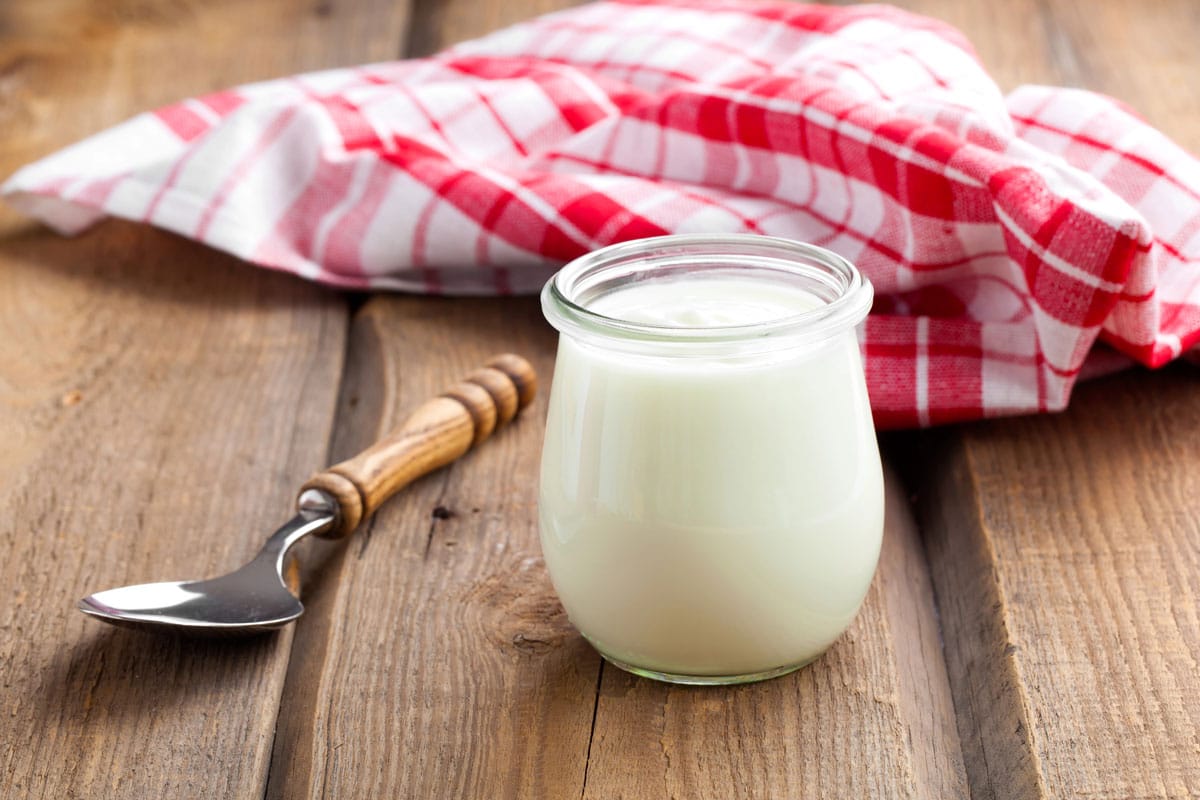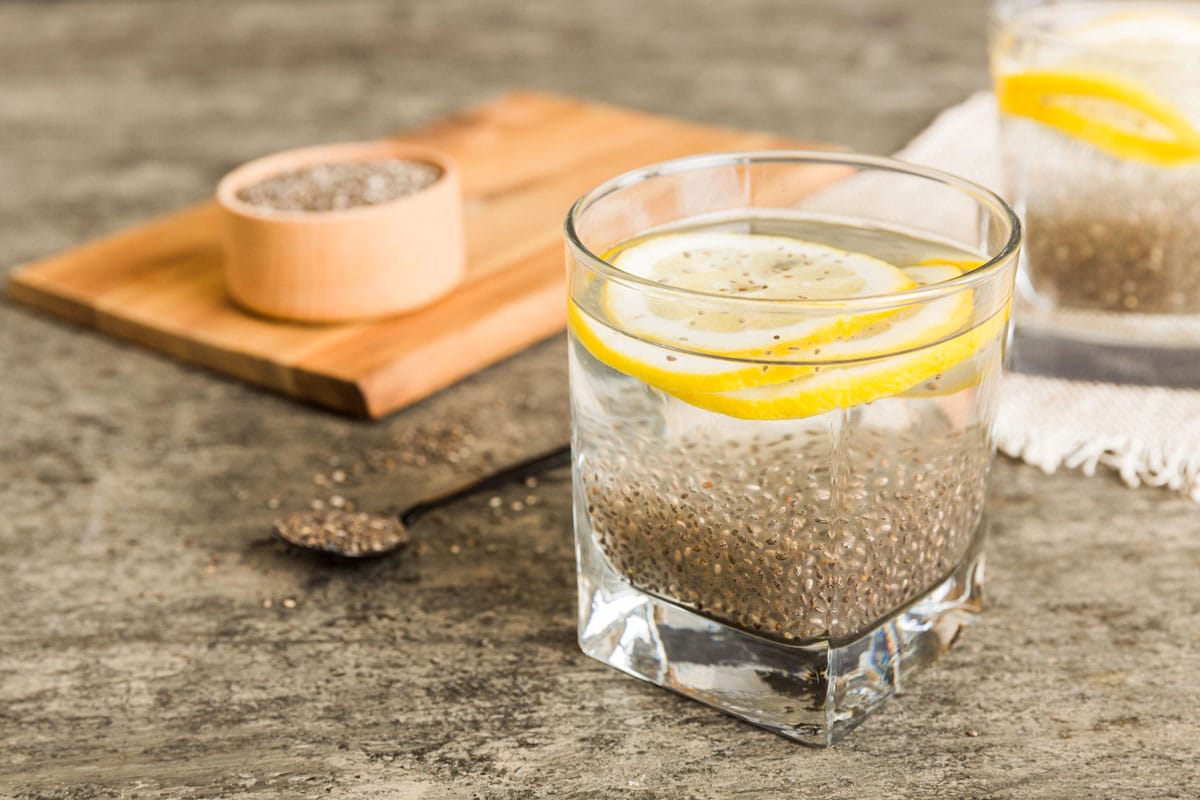Natural Stomach Flu Treatment: What Works and Why
This post may contain affiliate links. Read my full disclosure here.
The “stomach flu” isn’t really the flu at all. It’s viral gastroenteritis, most often caused by norovirus, rotavirus, or adenovirus. It strikes fast, bringing vomiting, diarrhea, and fatigue that can leave you wiped out for days.
While there’s no cure for the stomach flu, home treatments can shorten recovery time and ease symptoms. Studies suggest that probiotics, electrolyte-rich fluids, and gentle real foods help restore balance to your gut and prevent dehydration — the biggest danger of this illness.

Table of Contents
What Causes the Stomach Flu?
Despite the name, the stomach flu has nothing to do with influenza. It’s caused by several viruses that inflame the stomach and intestines, damaging the intestinal lining and leading to watery diarrhea and vomiting.
The most common culprits include:
- Norovirus – affects all ages and spreads rapidly in households, daycares, and schools.
- Rotavirus – primarily impacts infants and children.
- Adenovirus – can cause longer-lasting diarrhea in children under two.
- Astrovirus – more common in young children and the elderly during the winter months.
You’re contagious as soon as symptoms start and may continue spreading the virus up to two weeks after recovery.
Remember to wash your hands regularly (and remind children to wash their hands). Avoid touching your mouth with unwashed hands.
Symptoms of Viral Gastroenteritis
Typical symptoms appear within 12 to 48 hours after exposure and can last from one to three days (sometimes longer).
- Watery diarrhea
- Nausea and vomiting
- Stomach cramps
- Low-grade fever
- Headache or muscle aches
- Fatigue and chills
If symptoms last longer than two days or include bloody diarrhea, persistent vomiting, or dehydration, seek medical care. You want to make sure you’re dealing with a stomach bug, not contaminated food or an intestinal infection.
Stomach Flu Treatment at Home
Most cases clear on their own, but supportive care can make a big difference in comfort and recovery. These home remedies are simple, natural, and supported by current research.
#1 – Stay Hydrated (The Most Important Step)
Dehydration is the main risk of stomach flu. Research from the World Health Organization recommends oral rehydration solutions (ORS) — mixtures of water, glucose, and electrolytes — to prevent complications.
At home:
- Drink plenty of liquid, but do it slowly. Sip coconut water, switchel, homemade bone broth, or weak herbal teas (such as peppermint, ginger, or chamomile).
- Avoid drinks with high sugar, caffeine, or artificial dyes — they can worsen diarrhea.
- Take small, frequent sips instead of large gulps to reduce nausea and replace lost fluids.
Health Tip: A 2025 study found that bone broth provides amino acids and minerals that may help support gut healing and hydration.
Learn how to make homemade chicken bone broth and beef bone broth. We also explain more options for natural hydration.
#2 – Support Your Gut with Probiotics
Studies show probiotics can shorten the duration of diarrhea caused by viral gastroenteritis. Certain strains — including Lactobacillus rhamnosus GG and Saccharomyces boulardii — reduced symptoms by about one day.
Try these probiotic-rich foods:
- Yogurt or kefir with live cultures
- Sauerkraut or other lacto-fermented fruits and vegetables (if you can tolerate solid food)
- Kombucha (in small amounts, 2–4 oz at a time)
- Probiotic supplements (especially useful for children and adults recovering from illness)

Would you like to save this?
#3 – Eat Gentle, Healing Foods (Skip the Old BRAT Diet)
The old BRAT diet (bananas, rice, applesauce, toast) was once recommended, but it’s now considered too low in protein, fat, and nutrients for recovery.
Instead, eat light but nourishing foods such as:
- Plain oatmeal or rice porridge
- Steamed potatoes or carrots
- Yogurt or kefir
- Lean meats or scrambled eggs once vomiting stops
A 2025 study found that oral nutritional supplements don’t worsen diarrhea and may help speed recovery.
#4 – Try Chia for Soothing Hydration
Chia seeds absorb up to 12 times their weight in water, forming a gel that can gently rehydrate and soothe the digestive tract. They also help slow fluid loss during recovery.
Chia Fresca Recipe
- 1 tablespoon chia seeds
- 10 oz water
- 2 tsp lime juice or 1 tbsp lemon juice
- 1 tsp sugar or stevia (optional)
Mix and let stand for 10 minutes before drinking.

#5 – Rest and Rebuild
Give your body time to heal. Warm baths with Epsom salts or a hot compress over the abdomen can ease muscle soreness and cramps once active symptoms subside.
Gentle movement or stretching helps once energy returns, but pushing too soon can trigger a relapse. Think “nourish and rest” — not “power through.”
Why Antibiotics Don’t Help
Because viral gastroenteritis (stomach flu) is a viral infection, antibiotics won’t help. They may even disrupt gut bacteria further. If your symptoms are severe or persist longer than expected, see a doctor to rule out bacterial food poisoning or another cause.
When to Call a Doctor
Seek medical attention if you experience:
- Signs of dehydration (dry mouth, dark urine, dizziness)
- Persistent vomiting or diarrhea lasting more than 48 hours
- High fever (over 102°F)
- Blood in stool or vomit
- Symptoms in infants, elderly adults, or anyone with a weakened immune system
The Bottom Line
Most stomach flu cases resolve on their own, but proper hydration, probiotics, and gentle nutrition can help you recover faster and feel better sooner.
Stick to clean fluids, probiotic foods, and real nourishment — not sugar-loaded sports drinks or restrictive diets — and let your body do what it was designed to do: heal itself.
More Help for Cold and Flu Season
If you’ve found this post helpful, you may also enjoy the other posts in this series:
- Probiotics for Colds and Flu – Fewer Symptoms, Faster Recovery Time
- The Best Supplements to Prevent and Treat Cold and Flu
- Copper Kills Germs (Here’s How to Use it At Home)
See also – treatments for coughs, congestion, earaches and sore throat.

This article is written by Laurie Neverman. Laurie is a lifelong learner with a passion for natural remedies and holistic healing. She’s successfully improved her eyesight and cleared her psoriasis.
Originally posted in 2012, last updated in 2025.


Where I came from, a simple veggie or chicken broth with a spoonful of miso added just before serving is the go to remedy for illness involving intestinal symptoms. If you are too wiped out to cook, just very hot water with a couple of heaping teaspoons of miso does the job. A little fresh grated ginger root or a pinch of ginger powder gives it a little more zing, flavor and herbal benefit. Traditional miso is made with cooked soybeans cultured with rice that has been inoculated with a beneficial variety of aspergillus spore, referred to as “koji”, that is an aid to digestion, and sea salt. Most traditional miso is made with soybeans, rice and koji, some are made with a combination of beans fermented with the soybeans , but in recent years some companies make a great , delicately flavored chickpea miso with no soybeans that also uses rice koji. I am very reactive to a number of molds, but miso has never been a problem. Two excellent organic miso makers who offer organic chickpea miso without soybeans are Great Eastern Sun and South River. Exact recipes vary. Both companies sell their miso via retailers and online.
I have lived in Wisconsin long enough that when I saw the term “BRAT” I was intrigued that bratwurst, in addition to it’s many alluring charms, was therapeutic! Those foods would definitely not have worked for me during my dysbiosis days!
A further word of caution regarding the use of fiber: The liquid fibers are helpful for me in keeping a regular bowel pattern. With a gut that is still a bit sensitive, the roughage or bran types of fiber can be very irritating, causing mild irritation to cramping. Dysbiosis can be a lifetime adventure!
How about bone broth… something that will help heal your gut, I love the chia recommendation.
Yes, that would be in the #1 recommendation “Stay with soothing drinks like mint or chamomile tea, or restorative ones like coconut water or bone broth. Broth contains nutrients and minerals that aid healing. For my broth recipe, shown at the top of the post in a batch of chicken soup, visit How to Make Homemade Chicken Broth.”
Just a correction from a quote above. Fiber actually helps your gut move more and brat diet is LOW fiber which would slow the movement of things ????
I’m sick with the stomach flu and your post about the stomach flu was very helpful & useful. Thank you!
You’re welcome. I hope you feel better soon.
Most dormant symptoms of the stomach ache are the shooting pain in the abdomen.
The problem with the BRAT diet is the banana and rice cancel each other out. You either use one or the other. In a homeopathic diet you use rice for diarrhea and banana’s for constipation. This is what we used to use for our infant son’s diet when he got sick as well with a stomach issue.
I didn’t know that the reason why my son have stomach ache that come and go is because of stomach flu. Thanks for sharing Laurie.
My daughter and grandson were visiting for Christmas, and as soon as they got back home home, (actually, my grandson was sick when they first got here, as his normally good mood was gone and he threw tantrums that were not like him at all) they both got horribly sick. As soon as my daughter texted me about this, I began taking vitamin C and zinc every hour on the hour. I did this for 4 days, and I never got sick, but everyone else they came in contact with did.
Thanks for sharing your experience, Carol. (Sorry everyone else got sick, but glad that you didn’t.)
Yes! Vitamin C (not ascorbic acid) on the hour. 1000mg to bowel tolerance and cut in half the following day. It really works. “Doctor yourself” protocol.
I also think activated charcoal is a blessing to have on hand. I was out of VIT c and gave AC to the older ones that would accept it, and they were barely sick compared to the others.
Yoghurt and other acid foods and beverages (like lime for example) can actually worsen the nausea and the vomiting.
Lime, lemons, oranges are alkaline forming
Really nice and informative article. Just to be correct the BRAT diet is meant to help you ingest any kind of food to give you at least a bit of energy untill you recover and can get back to fully nutricious diet. And it is definatrly not full of fibre, and even more, fibre is not constipating, actually increasing the ammount of fibre you eat causes your bowel movement to be more efficient and smooth. And I can agree that BRAT doesn’t have all the nutrients you need, but as a recent stomach flu survivor i can say that anything that will not upset my stomach will be a blessing 🙂
Omg I’m just barely getting over the stomach flu this past week as been miserable..fever, chills, nausea(still am a lil ugggh) thanks for the article I could use it. Thanks for the post.
Nice post..been looking for diet other than brat as I can’t eat them foods on a normal day let alone when sick.
thanks for postx
Great common sense article, thanks a lot!
Laurie, I found your post as I was looking for info on what foods to eat after a bout with stomach flu. Yours came up with the best and most complete help! My 19 month old grandson is just recovering from stomach bug, and I came down with it as well. We share everything.
I never had confidence in the BRAT diet, knowing that my grandmother and mother encouraged getting back to eating a strengthening diet. Homemade broths and homemade yogurts. Not so much breads and sugary foods. Your chicken soup recipe brought tears to my eyes. I make my own,too, and sent some Sunday for the baby. But I felt I was back in my Sitti’s (grandma) kitchen watching her put it all together, along with the chicken feet! All day as I came in and out I could smell the progress as the huge soup pot simmered on the back burner.
I will enjoy keeping up with your post, Laurie, and passing on ideas to my daughters.
Where has all this natural wisdom to living gone? We just have to look back a couple generations, sometimes!
Stay healthy, keep laughing!
Marlene Kaim
Sent from my iPhone
Thank you for sharing your story, Marlene. I think we’ve gotten away from the old ways because we’ve been pushed by media and schools to rely on pills and “modern science”, whereas back in the day, folks used tried and true methods to take care of problems. Modern science is finally getting around to finding out what grandmas around the world knew a long time ago, but there’s little money to be made in helping people to help themselves.
If you enjoy reading about old school solutions, you may enjoy this post about my grandparents in the Great Depression – https://commonsensehome.com/great-depression-life/.
I am so thankful for Google! Thanks to you Laurie for your post! I think I am just coming out of the stomach flu. Monday evening – Vomited for 11 hours every 1-1 1/2 hour ( always happens in the night 🙁 ) We called the nurse and she thought I was dehydrated, which I would agree, however , I didn’t think bad enough to go to ER. I have been trying to hydrate myself. The nurse recommended Gatorade, gingerale (defizzed), unfiltered honey and chicken broth. I have tired these things- it is now Thursday and I have a rumbling stomach and diarrhea. I am now trying the chia seed drink and I am continuing with my chicken broth today. It makes sense about the chia seeds! Sincere Thanks and I hope it works because my husband and I were going on a little get away this weekend…. If you have anymore tips for me I sure would appreciate it!
Vomiting and diarrhea are a natural part of your body’s efforts to purge the problem. Whatever you have sounds quite virulent. I’m not too keen on the gatorade and ginger ale because of the high sugar content, which tends to feed the bad bugs.
If you haven’t used a concentrated probiotic, I’d highly recommend one – Optimum Protiotics with Spore Forming Strains is the type I recommend (spores are a good thing), because the spores penetrate deeper into the intestinal tract to repopulate it with healthy bacteria. The more you can crowd out the bad bugs, the quicker your recovery should be. Most of us have a compromised microbiome in our guts due to stress, problems with the food supply, chemical exposure and other environmental issues.
Tea and toast my mother also always swore by. Still works for me!
Thank you thank you thank you ! I very much appreciate a much healthier alternative to the brat diet. Toast and rice etc sound horrendous at the moment. I will be sending my husband to the health food store to get some refreshing coconut water and a probiotic smoothie drink. Yay for health conscious folks ! Thanks again
I’ve heard that the stomach bugs are starting to make the rounds again. I hope you feel better soon!
Isn’t coconut water a laxative? Is that a good idea when you are suffering from stomach bug with diarrhea??
Tolerance varies by individual, from Wise Geek:
So sip, don’t guzzle.
I regularly drink coconut water and as my child’s caregiver I ended up sharing her illness. The coconut water was very beneficial for us both as well as mild soup/broth herbal teas with honey and we thankfully recovered rather quickly.
The BRAT diet isn’t intended to heal but is food that is gentle for an upset GI system. I am coming off such a viral infection and am wondering how anyone finds energy to cook anything…including the tea recipes. There is no way I could have tolerated anything as strong tasting as even broth most days…I did manage chicken broth once but still had severe stomach cramps afterwards. The BRAT foods are the only thing I could tolerate. And since they are quick to no cooking…they didn’t wipe me out energy wise when getting them to eat. The idea of yogurt still turns my stomach even though I normally love it. WAAYYY too heavy.
Ideally one has a caregiver while ill to help provide more nourishing options.
Thank you so much for this
I’ve been suffering from the stomach flu for the past couple days and I’m now at the stage where I’m really really hungry but I’m afraid to eat anything
I’ll try these
Thank you so much
I hope you feel better soon!
Thank you for this information. I did some R&D on my own before landing on your site. I found similar information on other sites, but your information was much more concise and I really appreciated the home remedies tips. My boyfriend and I are simultaneously effected with the Norovirus – unfortunately, we’re not “blessed” with the 48 hour version….=((
Oy! I hope it clears soon. That’ll really slow you down. Knock on wood, we haven’t been hit yet this season.
I”m SO glad you posted this, because this is precisely the information I needed, today. Well, really, yesterday, too. But today is soon enough. Can you tell I’m sick with the flu? I just had a friend bring me chicken soup (I helped butcher those broilers myself, a month ago), and I have chia seeds in the pantry. And probiotics in the fridge. Plus I’m 17 weeks pregnant, and can’t AFFORD to be dehydrated! Thanks again!
Thanks for linking your great post to FAT TUESDAY. This was very interesting! Hope to see you next week!
Be sure to visit RealFoodForager.com on Sunday for Sunday Snippets – your post from Fat Tuesday may be featured there!
http://realfoodforager.com/2011/10/fat-tuesday-october-25-2011/
If you have grain-free recipes please visit my Grain-Free Linky Carnival in support of my 28 day grain-free challenge! It will be open until November 2.
http://realfoodforager.com/2011/10/grain-free-real-food-linky-carnival/
Thanks for commenting, ladies! I hope you make it through the dark days of winter unscathed. 🙂
Very informative post! Lots of wonderful info- Yes bone broth is like a miracle cure- my whole family requests homemade simple soups whenever they feel a touch of any illness coming on. We are also big fans of Epsom Salt, and always have a few cartons on hand. Great suggestions!
This post is full of great information and useful strategies to help with the stomach flu.
Love your useful posts!!!
Your suggestions are much better! I find staying hydrated and eating kefir really does help. I'm going to try the Chia Fresca next time: that one's new to me!
You're welcome. I hope this in one post you don't have to use.
I was wondering if warm showers would help too
Sure, as long as you don’t overdo it, and if dizziness is a part of your symptoms, don’t tip over in the shower.
Thanks, I'm going to print this out and keep it handy!